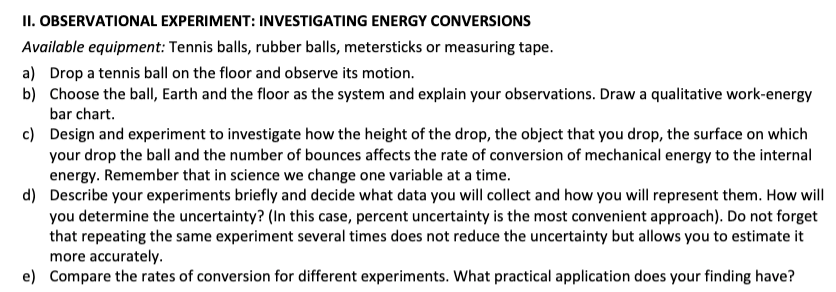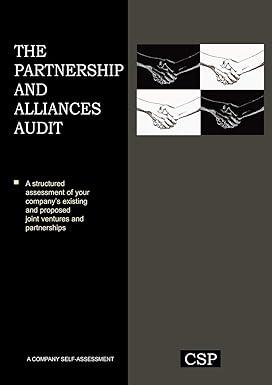
II. OBSERVATIONAL EXPERIMENT: INVESTIGATING ENERGY CONVERSIONS Available equipment: Tennis balls, rubber balls, metersticks or measuring tape. a) Drop a tennis ball on the floor and observe its motion. b) Choose the ball, Earth and the floor as the system and explain your observations. Draw a qualitative work-energy bar chart. c) Design and experiment to investigate how the height of the drop, the object that you drop, the surface on which your drop the ball and the number of bounces affects the rate of conversion of mechanical energy to the internal energy. Remember that in science we change one variable at a time. d) Describe your experiments briefly and decide what data you will collect and how you will represent them. How will you determine the uncertainty? (In this case, percent uncertainty is the most convenient approach). Do not forget that repeating the same experiment several times does not reduce the uncertainty but allows you to estimate it more accurately. e) Compare the rates of conversion for different experiments. What practical application does your finding have? II. OBSERVATIONAL EXPERIMENT: INVESTIGATING ENERGY CONVERSIONS Available equipment: Tennis balls, rubber balls, metersticks or measuring tape. a) Drop a tennis ball on the floor and observe its motion. b) Choose the ball, Earth and the floor as the system and explain your observations. Draw a qualitative work-energy bar chart. c) Design and experiment to investigate how the height of the drop, the object that you drop, the surface on which your drop the ball and the number of bounces affects the rate of conversion of mechanical energy to the internal energy. Remember that in science we change one variable at a time. d) Describe your experiments briefly and decide what data you will collect and how you will represent them. How will you determine the uncertainty? (In this case, percent uncertainty is the most convenient approach). Do not forget that repeating the same experiment several times does not reduce the uncertainty but allows you to estimate it more accurately. e) Compare the rates of conversion for different experiments. What practical application does your finding have







